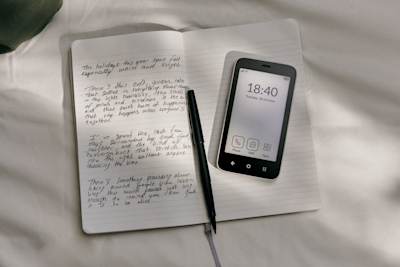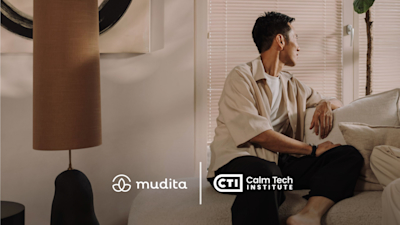
How to Build a Tech Environment to Support Your Mental Health
A Healthier Relationship With Technology ?
In the 30 seconds it took you to find and click on this article, the average person checked their phone four times. But here's what's really happening in those 30 seconds: behavioral scientists at major tech companies just earned another data point proving their addiction algorithms are working exactly as designed.
The problem isn't that we're addicted to our phones. Science has shown that the problem is with our phones, which are engineered to be addictive. However, we're still blaming ourselves for falling into traps we never saw coming.
Mudita Kompakt is your mindful tech companion
I recently read a very interesting book, The Chaos Machine by Max Fisher.
In the book, the author delivers a powerful exposé of how social-media platforms with their algorithms and growth‑centric design systematically hijack our attention, feed our negative feelings, and reshape how we think, feel, and relate.
He unpacks stories from around the world, revealing how technologies meant to connect us have often fractured our focus, autonomy, and calmness.
At the same time, The New Yorker's Kyle Chayka, in his eye-opening article "Are You Experiencing Posting Ennui?", captures a quieter cultural shift: a growing fatigue with curated content, the pressure to perform, and the mental toll of being always visible.
Check out the discussion about this article on the Mudita Forum & join the conversation.
Together, Fisher and Chayka (in their own unique ways, mind you) aren't just critiquing what's broken, they're uncovering an opportunity: the chance to rebuild our relationship with tech from the ground up.
At Mudita, we’re all about exploring how to intentionally design a tech environment that supports your mental health, instead of undermining it.
So, let’s take a closer look at how mindful tech use, supported by research, insight, and intentional design, can help you create a tech environment that protects your mental health.
1. Understanding the Problem
Fisher’s investigation into the architecture of social media reveals how platforms like Facebook, Instagram, and TikTok are built to maximize user engagement at any cost.
What drives that engagement? It’s certainly not joy or connection. The more you look into it, it seems that it’s outrage, sensationalism, and the dopamine rush that comes from grabbing attention.
These platforms exploit our psychological wiring, pulling us into endless scroll loops and keeping us stuck in cycles of comparison and distraction.
Meanwhile, Chayka highlights a growing emotional burnout among users. The once spontaneous joy of posting has been replaced by exhaustion. There’s a creeping sense of hollowness in the constant need to be seen, liked, and validated. For many, this has created a low-level hum of anxiety, pushing us toward a state of permanent online performance.
The result? A tech landscape that often feels less like a tool and more like a trap.
2. Principles of a Mindful Tech Environment
To support mental well-being, your tech environment must be intentional, boundaried, and non-exploitative. But what does that mean? Let’s break it down:
Intentional use: You decide when and how to engage, rather than being pulled in by default.
Boundaries by design: Your tools should support limits, not override them.
Respect for attention: Choose technology that values your focus instead of trying to fracture it.
It’s important to remember that the focus should not be about abandoning all tech, because we have to be realistic about the world we live in. The focus should be about choosing tools that respect your mind, time, and emotional bandwidth.
3. Practical Elements of a Supportive Tech Environment
a. Device Choices
One of the most powerful changes you can make is reassessing your devices. If your phone is your biggest source of distraction, consider simplifying:
Mudita Kompakt offers essential connectivity without the chaos of social media or time-consuming apps. It’s built for people who want to be reachable, but at the same time want space to think, rest, and be present in real life.
Mudita Harmony or Mudita Bell helps you unplug every night with a phone-free bedtime ritual. As a minimalist alarm clock with minimal blue light or disruptive notifications, it encourages healthier sleep habits and a gentler transition into rest.
Consider replacing or limiting use of devices that prioritize constant stimulation. Tools should help you focus, not fragment your mind.
b. Usage Frameworks
Create clear tech rituals throughout your day:
Time blocks: Set windows for messaging, emails, or news, and stick to them. The Focus Timer in Mudita Harmony is perfect for staying present during deep work sessions or mindful breaks, helping you create healthy boundaries with your tech use.
Mudita Harmony features a FOCUS Timer to help boost productivity
Tech-free zones: Keep phones out of the bedroom or bathroom. Encourage your friends & family to keep phones away from the dinner table as well. Establish a charging station away from your main living & dining areas.
Mindful morning & evening routines: Begin and end your day without screens. This is where tools like Mudita Harmony & Mudita Bell can be especially helpful.
c. Digital Hygiene Habits
Protect your digital space like you would your physical one:
Turn off non-essential notifications to reduce interruptions.
Schedule check-ins for social media rather than grazing throughout the day. If you do use social media, give yourself 15-20min per day, and do it on a laptop or a desktop computer so that the use is more intentional.
Declutter apps and hide icons that create impulsive behaviors.
Try app sabbaticals: Try a digital detox & take a week or a month off from a high-stimulation app and observe how your mind changes. Mudita Kompakt is perfect for this because it still lets you stay in touch, while doing away with all the doomscrolling.
4. Supporting Mental Well-being Through Simplicity
When your tech environment is aligned with your values, you’ll see that you feel more grounded, less anxious, and more present. Instead of overstimulation, you invite calm. Instead of FOMO, you discover JOMO (the joy of missing out).
READ: How to Embrace the Joy of Missing Out?
Especially for children, simplicity through mindful tech use offers more than just a break from screens, it serves as a portal to the real world.
A recent Harris Poll of American kids ages 8 to 12 revealed something very surprising: despite growing up with smartphones and social media, what most kids truly want is more unsupervised, real-world freedom.
They long to explore neighborhoods, play outside, and connect face-to-face with friends. However, because modern parenting culture has shifted toward high supervision and structured activities, kids often turn to screens simply because it’s the only freedom they’re allowed.
Rebuilding healthy tech habits begins with creating space for offline life, not just by removing devices, but more by restoring the independence and connection that screens have replaced.
This isn't about achieving perfection, but rather about implementing small, consistent changes that enable your mind (and your child’s mind) to rest and refocus. Think about it as reclaiming the mental space that constant connectivity subtly erodes.
READ: What Is Contaminated Time and How to Avoid It
5. Encouraging a Culture of Mindful Tech Use
Just as important as individual choices are the cultural ones. Share your journey. Talk to friends about how you’re reducing screen time or sleeping better without your phone nearby.
Normalize breaks.
Celebrate boredom.
Find joy in analog pleasures, like books, nature, conversation.
A healthier tech culture begins when more of us opt out of the noise and start curating environments that serve us, not the other way around.
READ: The Lost Art of Conversation
Final Thoughts
The fatigue described by Chayka and the deeper harms explored by Fisher both point to the same truth: we weren’t meant to live this way.
But, the truth is, we don’t have to keep going down the same path. By building a tech environment that supports your mental health, you're not rejecting technology, you’re choosing a healthier relationship with it.
Every small step matters.
Whether it’s turning off notifications, replacing your smartphone alarm with Mudita Harmony or Mudita Bell, or choosing a simpler phone like Mudita Kompakt, you’re creating space to breathe, think, and be human again.
Related stories

What to Look for When Choosing a Minimalist Phone
Looking for the best minimalist phone? Learn which features matter most, what to avoid, and how Mudita Kompakt combines simplicity, focus, and mindful design.

The Mudita Radiant Story: Kickstarter Finished & Pre-Orders Begin
Mudita Radiant’s Kickstarter campaign has ended with great success. Pre-orders are now open on our website. Discover our mindful Swiss automatic field watch.

Mudita Products Achieve Calm Tech Institute Certification
Mudita Kompakt, Harmony 2 & Bell 2 earn Platinum Tier Calm Tech Certification for promoting calm, focus, and better sleep.
If you'd like to receive the best stories from our blog, keep up to date with our progress and get notified about our product releases and special discounts.